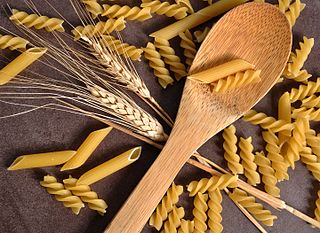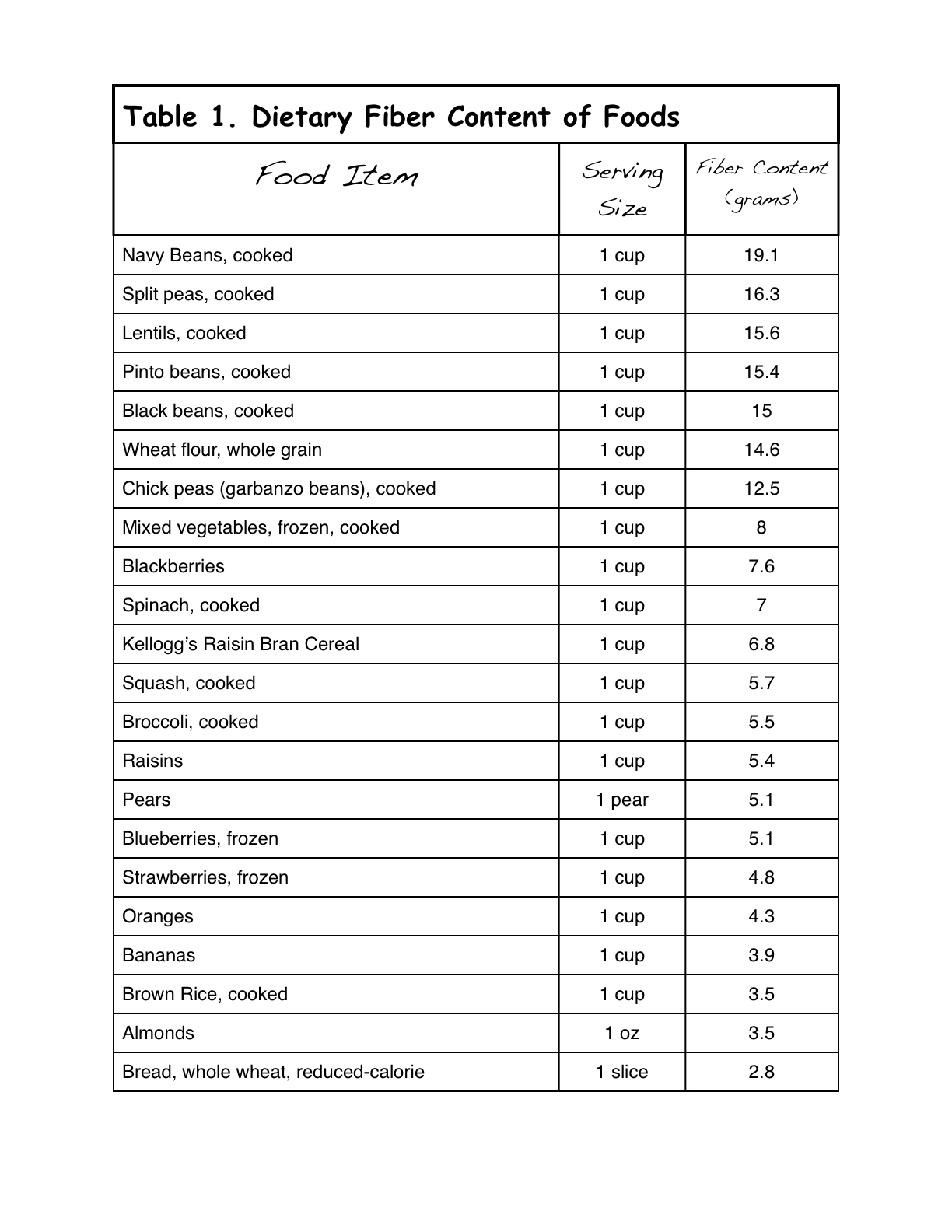The Benefits of Fiber
 Fiber plays a key role in a healthy diet. It does more than just regulate bowel movements though. Fiber plays a role in keeping your gut bacteria happy and healthy. The health of the gut microbiome is just now being linked to the development (or avoidance) of many chronic diseases, as scientists and doctors learn more and more about this subject in their research.1
Fiber plays a key role in a healthy diet. It does more than just regulate bowel movements though. Fiber plays a role in keeping your gut bacteria happy and healthy. The health of the gut microbiome is just now being linked to the development (or avoidance) of many chronic diseases, as scientists and doctors learn more and more about this subject in their research.1
Let's take a closer look at fiber as we discuss the different types of fiber, their health benefits, and how to get more fiber in your daily diet.
Functions and Types of Fiber
Dietary fiber is defined as nondigestible carbohydrates and lignins found in plant food.2 Fiber is unable to be broken down by the body's digestive enzymes like other nutrients are. It's the part of plant foods we eat that do not get absorbed into the body.
There are two types of fiber and each acts in a different way:
1) Soluble Fiber - Fiber that dissolves in water and forms a gel-like substance. This type of fiber is found in fruits, vegetables, beans, and oats.
2) Insoluble Fiber - Fiber that does not dissolve in water. This type of fiber helps keep things moving in your digestive tract and provides bulk to your stools. Insoluble fiber can be found in whole grains, nuts, and vegetables.
Fiber plays some important roles in the human body including:3,4
- Increases the amount of time you chew your food, which helps your body register when it feels full. This keeps you from over eating and helps you control body weight.
- Fiber acts like "nature's broom" going along and sweeping up all the undesirable substances and toxins in your digestive tract, removing them in your stools. For example, fiber grabs on to cholesterol in your gut and prevents it from being absorbed, thereby reducing your cholesterol levels.
- Provides bulk to your stools, which softens and enlarges them to reduce problems with constipation and hemorrhoids.
- Absorbs large amounts of water and, again, adds bulk to your stools. This can help decrease the unwanted effects of diarrhea.
- Soluble fiber acts to slow the absorption of sugar, which reduces your risk of diabetes.
- Portions of the fiber you consume are broken down by bacteria in the large intestine in a process called fermentation. Fermentation produces organic acids which help nourish the lining of your colon.
Health Benefits of Fiber
For those individuals who consume adequate amounts of fiber on a daily basis there are a number of health benefits including lower rates of obesity, a decrease in cardiovascular disease, lower cholesterol levels, decreased risk of type 2 diabetes, and much more. The data below is just a small sample of findings on the benefits of eating a high-fiber diet:
- Fiber intake of 30 grams/day or more helps prevent the development of type 2 diabetes.5
- As little as a 10 gram/day increase of fiber intake reduces mortality from colorectal cancer by 33%.6
- Individuals consuming an average of 34 grams/day of fiber compared to those consuming an average of 13 grams/day had a 42% lower risk of colorectal cancer.7
- Increased intake of both soluble and insoluble fiber reduces the risk of mortality from coronary heart disease.8
- Women consuming a high-fiber diet compared to women consuming a low-fiber diet had a 49% lower risk of weight gain.9
- For each increase in 10 grams/day of fiber, an average reduction in total cholesterol of 12.5 mg/dL is realized.10
- A 9% reduction in total and LDL cholesterol, 5-6% reduction in blood pressure, and reduced risk of cardiovascular disease was seen in individuals consuming 7.5 grams/day of grape antioxidant dietary fiber.11
- A daily intake of 20-25 grams/day of fiber dramatically reduces symptoms and effectively treats cases of constipation.12
How Much Fiber Do You Need on a Daily Basis?
The 2010 Dietary Guidelines for Americans Report provides the following recommendations for sufficient daily fiber intake:13
14 grams of Fiber per 1,000 kcal
which is equivalent to
28 grams/day for a 2,000 calorie/day diet
or
35 grams/day for a 2,500 calorie/day diet
Note - Most individuals fall far short of this amount. The average daily fiber intake of the adult population in the U.S. is only a 14 grams/day total.14
Dietary Fiber Food Chart for Adding More Fiber to Your Diet
**Note—Fiber is only found in plant-based foods. Examples include fruits, vegetables, nuts, seeds, beans, legumes, oatmeal, rice, whole grains, etc.
**Note—Animal-based foods do not contain fiber. Meat, dairy, and eggs are completely devoid of fiber and should be kept to a minimum in your diet (less than 10% of total caloric intake) or avoided all together if you wish to achieve optimal health.
For a complete list of fiber in all foods please search the USDA National Nutrient Database.
 References:
References:
1 Zhang Y-J, Li S, Gan R-Y, Zhou T, Xu D-P, Li H-B. Impacts of Gut Bacteria on Human Health and Diseases. Sugumaran M, ed. International Journal of Molecular Sciences. 2015;16(4):7493-7519.
2 US Department of Agriculture, National Agricultural Library and National Academy of Sciences, Institute of Medicine, Food and Nutrition Board. "Dietary Reference Intakes for Energy, Carbohydrate, fiber, Fat, Fatty Acids, Cholesterol, Protein, and Amino Acids (Macronutrients) (2005), Chapter 7: Dietary, Functional and Total fiber."
3 Slavin J. Fiber and Prebiotics: Mechanisms and Health Benefits. Nutrients. 2013;5(4):1417-1435.
4 Bourquin L, Titgemeyer E, Fahey Jr. G. Vegetable Fiber Fermentation by Human Fecal Bacteria: Cell Wall Polysaccharide Disappearance and Short-Chain Fatty Acid Production during in vitro Fermentation and Water-Holding Capacity Of Unfermented Residues. The Journal of Nutrition. 1993; 860-869.
5 Kaline K, Bornstein SR, Bergmann A, Hauner H, Schwarz PE. The importance and effect of dietary fiber in diabetes prevention with particular consideration of whole grain products. Horm Metab Res. 2007 Sep;39(9):687-93.
6 Jansen MC, Bueno-de-Mesquita HB, Buzina R, Fidanza F, Menotti A, Blackburn H, Nissinen AM, Kok FJ, Kromhout D. Dietary fiber and plant foods in relation to colorectal cancer mortality: the Seven Countries Study. Int J Cancer. 1999 Apr 12;81(2):174-9.
7 Bingham SA, Day NE, Luben R, et al. Dietary fibre in food and protection against colorectal cancer in the European Prospective Investigation into Cancer and Nutrition (EPIC): an observational study. Lancet. 2003 May 3;361(9368):1496-501.
8 Eshak ES, Iso H, Date C, Kikuchi S, Watanabe Y, Wada Y, Wakai K, Tamakoshi A; JACC Study Group. Dietary fiber intake is associated with reduced risk of mortality from cardiovascular disease among Japanese men and women. J Nutr. 2010 Aug;140(8):1445-53.
9 Liu S, Willett WC, Manson JE, Hu FB, Rosner B, Colditz G. Relation between changes in intakes of dietary fiber and grain products and changes in weight and development of obesity among middle-aged women. Am J Clin Nutr. 2003 Nov;78(5):920-7.
10 de Castro TG, Gimeno SG, Ferreira SR, Cardoso MA; Japanese-Brazilian Diabetes Study Group. Association of dietary fiber with temporal changes in serum cholesterol in Japanese-Brazilians. J Nutr Sci Vitaminol (Tokyo). 2006 Jun;52(3):205-10.
11 Jiménez JP, Serrano J, Tabernero M, Arranz S, Díaz-Rubio ME, García-Diz L, Goñi I, Saura-Calixto F. Effects of grape antioxidant dietary fiber in cardiovascular disease risk factors. Nutrition. 2008 Jul-Aug;24(7-8):646-53.
12 Odes HS, Madar Z, Trop M, Namir S, Gross J, Cohen T. Pilot study of the efficacy of spent grain dietary fiber in the treatment of constipation. Isr J Med Sci. 1986 Jan;22(1):12-5.
13 USDA Dietary Guidelines Advisory Committee. Dietary Guidelines for Americans, 2010: PART D. Section 5: Carbohydrates. Available: www.cnpp.usda.gov/Publications/DietaryGuidelines/2010/DGAC/Report/D-5-Carbohydrates.pdf.
14 National Institutes of Health. Rough Up Your Diet - Fit More Fiber Into Your Day. August 2010. Available: http://newsinhealth.nih.gov/issue/Aug2010/Feature1.
